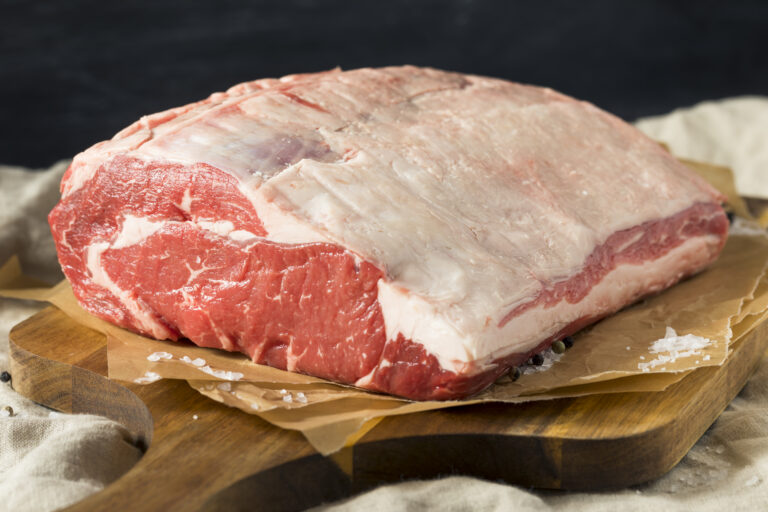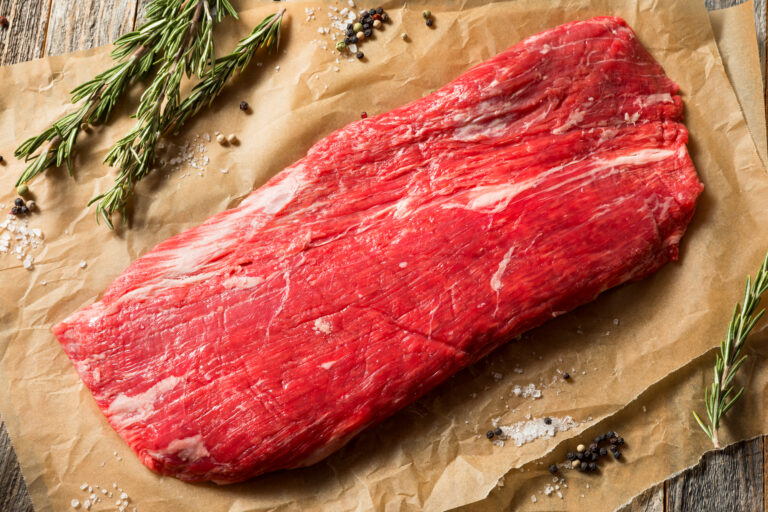5 Cheap Tenderloin Recipes to Save Money and Enjoy Delicious Meals
Save on tenderloin by understanding factors affecting prices, planning purchases, comparing prices effectively, leveraging bulk buying, timing purchases right, using coupons, exploring alternative shopping venues, and cost-effectively preparing at home.

Imagine savoring a succulent tenderloin without the hefty price tag. You can make that a reality with a few clever shopping strategies tailored to cut costs without compromising quality.
Disclosure: As an Amazon Associate, this site earns from qualifying purchases. Thank you!
Understanding Tenderloin Costs

When you’re trying to enjoy tenderloin on a budget, understanding what drives its price can lead to smarter shopping choices. Let’s look at how various factors and seasonal trends affect tenderloin costs.
- Supply Chain Dynamics: The journey from farm to your table impacts costs significantly. Variables such as feed prices, livestock health, and transportation influence how much you’ll pay.
- Demand Levels: Higher demand around holidays or special occasions can drive prices up. Plan your purchases when demand is lower to save money.
- Retailer Pricing Strategies: Different stores have distinct pricing policies. Compare prices at various retailers to find the best deal on quality tenderloin.
- Holiday Seasons: Expect to see a spike in beef prices during major holidays like Christmas and the Fourth of July. Buying off-season could help you avoid these peaks.
- Weather Conditions: Severe weather can affect beef production, leading to higher prices. Keeping an eye on weather trends can inform your purchase timing.
- Market Trends: Economic factors that influence feed and farming costs can also affect beef prices seasonally. Stay informed about agricultural market trends to anticipate changes in beef costs.
Smart Shopping Basics

Reduce tenderloin costs without sacrificing quality with these strategies:
- Monitor Sales Cycles: Grocery stores often have predictable sales cycles for meat. Keep an eye out for discount periods, typically every three to six weeks, and plan to buy your tenderloin during these times.
- Buy in Bulk: Consider purchasing larger quantities of tenderloin when it’s on sale. You can freeze what you won’t use immediately, extending the shelf life and maximizing your savings.
- Use Apps and Alerts: Leverage technology to your advantage by subscribing to alerts from your local grocery stores. Apps can notify you when tenderloins are on special, ensuring you never miss a deal.
- Consider Lesser-Known Cuts: Sometimes, opting for less popular cuts of tenderloin can be cost-effective. These cuts often offer similar quality at a lower price and are perfect for many recipes.
- Local Butchers: Specialist butchers often provide higher quality meats and might give discounts on larger orders. Building a relationship with your local butcher can also lead to personalized advice on selecting the best cuts.
- Warehouse Clubs: Stores like Costco or Sam’s Club sell meat in bulk at competitive prices. Membership fees can be quickly offset by the savings from bulk purchases.
- Online Meat Distributors: Explore websites that specialize in meat. They often run promotions and deliver high-quality tenderloin right to your door.
- Farmers’ Markets: Purchasing directly from farmers at markets can offer competitive prices and fresher products, as you’re buying straight from the source.
Comparing Prices Effectively

To ensure you’re getting the best deal on tenderloin, comparing prices is a crucial step. Here’s how to do it effectively to lower costs without sacrificing quality.
Online vs. In-Store Prices
Shopping online for tenderloin can sometimes offer lower prices than in-store due to online sales promotions and reduced overhead costs. Websites of major grocers often feature exclusive online discounts that aren’t available at their physical locations. For instance, online platforms might offer a 15% discount during a weekend sale, whereas their stores do not.
However, don’t forget to factor in shipping costs when ordering online. If the website offers free shipping for orders over a certain amount, consider buying your tenderloin along with other staples to meet this threshold. In contrast, local butchers and grocery stores might give you the chance to negotiate prices or take advantage of in-store specials, particularly for items nearing their sell-by dates. Furthermore, in-store shopping allows you to inspect the quality of the meat firsthand, a benefit not available online.
Utilizing Apps and Websites for Price Comparison
Leverage technology to ensure you’re paying the lowest price possible. Apps like Ibotta and Honey automatically search for the best deals and apply coupons at checkout. Websites like PriceGrabber or Google Shopping enable you to compare tenderloin prices across various retailers with just a few clicks.
Setting up alerts on these apps for tenderloin prices can also help you buy at the lowest price point. You’ll receive notifications when the cost drops at any store within your selected radius or online. This proactive approach ensures you never miss out on sudden price drops or special promotions.
Leveraging Bulk Buying
Buying in bulk can be a game-changer when seeking to cut down tenderloin costs significantly. Explore the core advantages and essential safety tips below.
- Lower Prices Per Unit: When you buy tenderloin in bulk, the price per pound typically drops, making it a cost-effective option for meat lovers.
- Fewer Shopping Trips: Stocking up means you’ll hit the stores less often, saving on both time and fuel expenses.
- Negotiation Leverage: Bulk purchases may give you the power to negotiate even better deals, especially at local butchers or wholesalers.
- Proper Freezing: Divide your meat into meal-sized portions and use airtight freezer bags to prevent freezer burn.
- Temperature Control: Always keep your freezer at 0°F (-18°C) to maintain the safety and quality of the meat.
- Thawing Practices: Thaw meat in the refrigerator, not at room temperature, to minimize the risk of bacterial growth.
Timing Your Purchase Right

Timing when you buy can dramatically decrease the cost of tenderloin. Being aware of the best times to shop and watching for specific sales can lead to significant savings. Buying tenderloin at the right time is crucial for snagging a good deal. Generally, the best times include:
- Post-Holiday Sales: After major holidays like Christmas or Thanksgiving, supermarkets often reduce prices on premium cuts including tenderloin to clear out excess inventory.
- End of the Month: Grocery stores frequently offer discounts towards the end of the month to meet sales targets.
- Late Evening Hours: Shopping later in the day can yield reduced prices as some stores mark down meats to sell before the next business day.
- Subscribe to Store Newsletters: Receive updates on sales directly in your inbox. Grocery stores and butcher shops often send out information on upcoming deals.
- Use Price Alert Apps: Apps like Flipp or BuyVia alert you when your favorite stores have a sale on specific items, including tenderloin.
- Follow Local Stores on Social Media: Many stores post special deals or flash sales on their social media platforms.
Alternative Shopping Venues

Exploring different shopping venues can lead to significant savings on high-quality tenderloin. Here’s how local butchers and farmers’ markets can be cost-effective alternatives to traditional supermarkets.
Local Butchers vs. Supermarkets
- Enjoy Fresher Meat: Local butchers typically offer fresher, higher-quality cuts than supermarkets. Fresher meat not only provides better taste but also allows for a longer shelf life in your fridge.
- Benefit from Bulk Buying: Many butchers give discounts for larger orders. If you’re planning a big event or want to stock up, this is an excellent way to save.
- Seek Personalized Service: Butchers can offer cooking tips, recommend specific cuts for your needs, and sometimes even take special requests.
- Support Local Economy: Spending your money at local businesses keeps the community strong and resilient.
Farmers’ Markets
- Discover Competitive Prices: Stalls at farmers’ markets often have lower overheads than stores, which can lead to competitive prices for their meats, including tenderloin.
- Access Organic and Free-range Options: Farmers’ markets are ideal for finding organic and free-range tenderloin, which are often healthier and more ethically raised.
- Engage in Direct Negotiations: Strike up a conversation with the vendor and you might be able to negotiate a better price, especially late in the day when they’re looking to sell remaining stock.
- Enjoy Seasonal Specials: Prices can drop when certain products are in season or in abundant supply. Keep an eye out for seasonal promotions.
Preparing Tenderloin Cost-Effectively
Explore how cutting costs doesn’t need to compromise quality when preparing tenderloin—these strategies ensure you enjoy this premium cut of meat without breaking the bank.
- Sharpen Your Skills: Utilize your kitchen to trim the tenderloin. Learn how to remove fat and silverskin accurately, skills that reduce your dependency on pre-prepped meats which come at a premium.
- Purchase Whole Tenderloins: Opt for buying the entire tenderloin instead of pre-cut steaks. It’s cheaper per pound, and you can cut it to your preferred thickness.
- Proper Storage Techniques: Extend the life of your meat. Immediately wrap portions you won’t use right away in plastic wrap and store them in the freezer, which keeps them fresh and reduces waste.
- Stir-fry Dishes: Stretch your tenderloin by slicing it thin for stir-fries. Mix with a variety of vegetables like bell peppers and onions for a cost-effective, nutritious meal.
- Bulk Cooking: Make dishes like tenderloin chili or beef stew that allow for bulk preparation and use every part of the meat, maximizing your purchase.
- Smart Seasoning: Invest in versatile seasonings and marinades that can transform even the smallest portion of tenderloin into a flavorful, satisfying dish.
Frequently Asked Questions
What are the best strategies for purchasing affordable tenderloin?
To purchase tenderloin affordably, monitor sales cycles, buy in bulk, and explore different purchasing options like local butchers or farmers’ markets. Utilizing apps for price alerts and comparing online vs. in-store prices can also lead to savings.
How can I save more using coupons and loyalty programs?
Save on tenderloin by using grocery store flyers, coupon websites, and subscribing to newsletters for exclusive deals. Also, sign up for rewards cards, participate in bonus points events, and track points with store apps to maximize savings.
Why should I consider buying tenderloin from local butchers or farmers’ markets?
Shopping at local butchers or farmers’ markets can offer fresher meat, bulk buying discounts, and personalized service. It also supports the local economy and provides access to competitive prices, organic and free-range options, and the ability to negotiate prices directly.
What are cost-effective ways to prepare tenderloin at home?
Prepare tenderloin cost-effectively by using proper cutting techniques, storing the meat adequately, and cooking in bulk, such as in stir-fries. Smart seasoning choices can enhance flavor without overspending, optimizing your investment in this premium cut.






